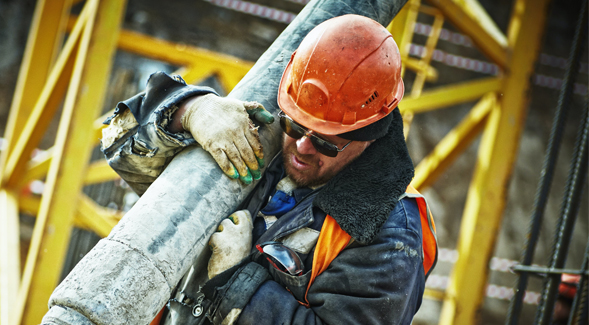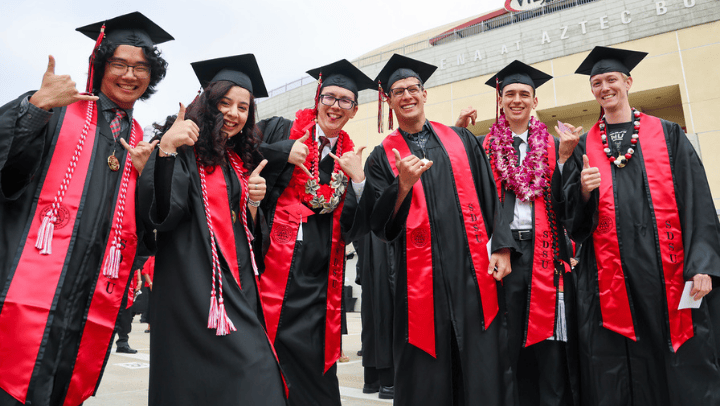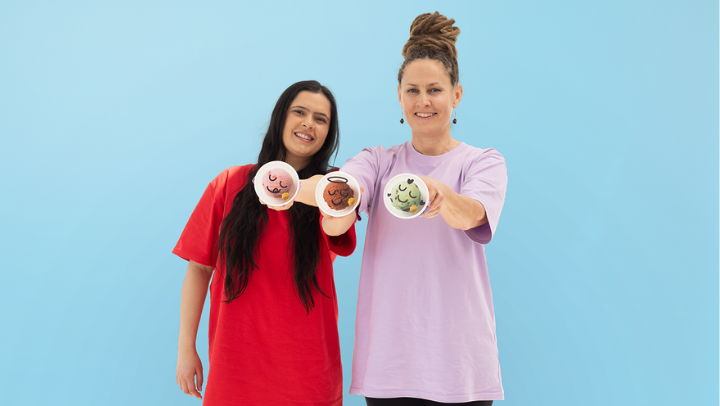Improving the Nexus of Mind, Machine and Motor in Construction Robotics
Civil engineer Reza Akhavian received a prestigious NSF CAREER award to improve coordination between construction workers and robots.

Construction robotics is a fairly new field researchers are still exploring. Its interdisciplinary scope has fascinated Reza Akhavian, assistant professor of civil and construction engineering, who developed a project that converges the disciplines of engineering, computer science, and social science.
Growing up in Tehran, Iran, Akhavian developed an early interest in science that produces concrete results, which led him to civil engineering and built environment science. Since fall 2019, he has been teaching construction technology courses at San Diego State University, and researching human and robot interactions in construction zones.
Akhavian received the prestigious National Science Foundation CAREER award given to early career faculty this spring. It brings $691,000 in funding over five years to support his research and education program on ways to enhance worker safety and efficiency in construction job sites by improving worker-robot interactions which have not yet been studied in-depth.
This project ties in closely with his other research interests in artificial intelligence (AI), machine learning, internet of things (IoT) and data analytics. The award follows on the heels of recent recognition for his work from Engineering News Record as a top young professional in construction in 2020, and from the American Society of Civil Engineers in 2019.
"We are delighted to support Reza Akhavian's creative work in the scientifically and technologically important area of collaborative robotics in construction," said Eugene Olevsky, dean of the College of Engineering. "Research activities are growing at a rapid pace in our college. Dr. Akhavian's grant is one of three NSF CAREER Awards obtained by our faculty members this spring."
Akhavian spoke with SDSU NewsCenter about how the NSF award will support his research.
What role will robots play in a construction zone?
Construction is a traditional industry that somewhat lags behind technology, so I have been interested in improving construction processes through human-centered automation. In this research, collaborative robots learn from and assist construction workers so that workers can focus on less strenuous physical work and higher-level planning and improvisation tasks. Using a network of sensors, the robot can adapt its movements with the workers and vice versa. We create this intuition for robots so they can contribute to safe, productive work. Construction job sites are a complex environment with a lot of uncertainties involved and things are not as structured as with manufacturing, for example. In a cluttered, unstructured environment developing real time, intuitive, and unobtrusive adaptation with robots is very important.
How do you enable trust between workers and robots?
There’s a myth that robots will take jobs away from humans, so building the understanding that robots are not here to steal workers’ jobs but to up-skill them is very important. In my research, robots take over repetitive tasks and leave room for workers to apply creativity and decision making. Workers would essentially become supervisors who regulate robots in construction zones and improvise as needed. We want to also create a framework for trust building and calibration and towards this goal, we will do lab experiments, computer simulations and later on field experiments.
How do you train workers to adapt to this new mindset?
Technology adoption in construction requires obtaining management buy-ins, adjusting the outdated engineering workflows, and creating trust among workers. For example, AI is perceived as a “black box,” especially in industries with traditional workflows. Transparency about organization wide gains or individual gains from AI like safety, productivity, and job security improvement can enhance trust, which in turn can lead to scalable adoption. Robots enabled by AI may mitigate the risk to physical safety, but a worker's psychological sense of safety through trust must also be ensured. It’s important that workers view robots as companions who enable transitioning their role to higher levels and safer tasks. Continuing education and training can play a critical role toward establishing these visions.
What will the computer simulation phase look like?
Computer simulation allows mimicking the real-world workflows of a construction job site in terms of how workers, equipment, and materials interact with each other before stepping in the field. In this project, it will help us develop high-quality and high-fidelity models that provide a perceptual common ground to predict the realistic technical value of worker-robot teamwork.
How will you help the student community, especially women students, through this award?
I will use the research findings in the courses I teach in both undergraduate and graduate classes. And we will organize project-based “learning-by-doing” events for high school and undergraduate students with concurrent workshops for high school teachers. It is my goal to have a special focus on underrepresented students, particularly women — only 9% of the construction workforce is female and out of those, only 2.5 % are tradespeople in the field. We want to change this perception that fieldwork is only a man’s job and show that there is ample opportunity in the industry for women to build their careers. Technology is one way to change this narrative; for example by delegating heavy work to robots, we have a golden opportunity to broaden the participation of all groups in construction. I am particularly proud of former women students who are now industry experts, as well as current students who have very bright futures in the industry.



